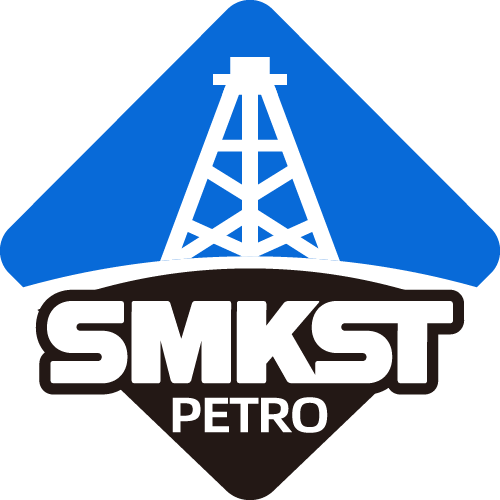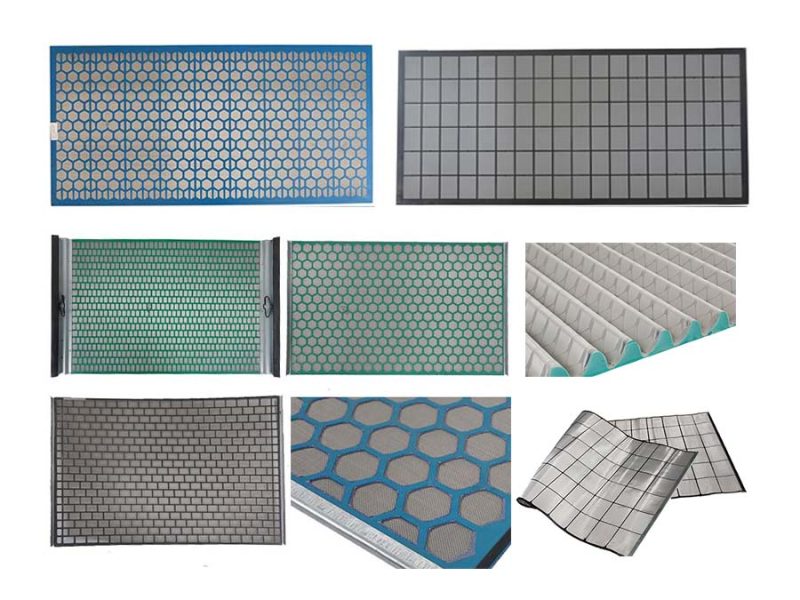
Published on: Feb 9, 2025
During oil and gas drilling operations, returning drilling fluid often carries substantial amounts of sand, rock cuttings, and various chemical impurities back to the solids control system. If these impurities are not effectively filtered out before recirculation, they can reduce the performance of the drilling fluid, accelerate equipment wear and blockages, decrease operational efficiency, and even pose safety risks. Therefore, selecting the right shale shaker screen is not a “minor detail,” but a crucial step to ensure efficient drilling fluid purification and stable equipment operation.
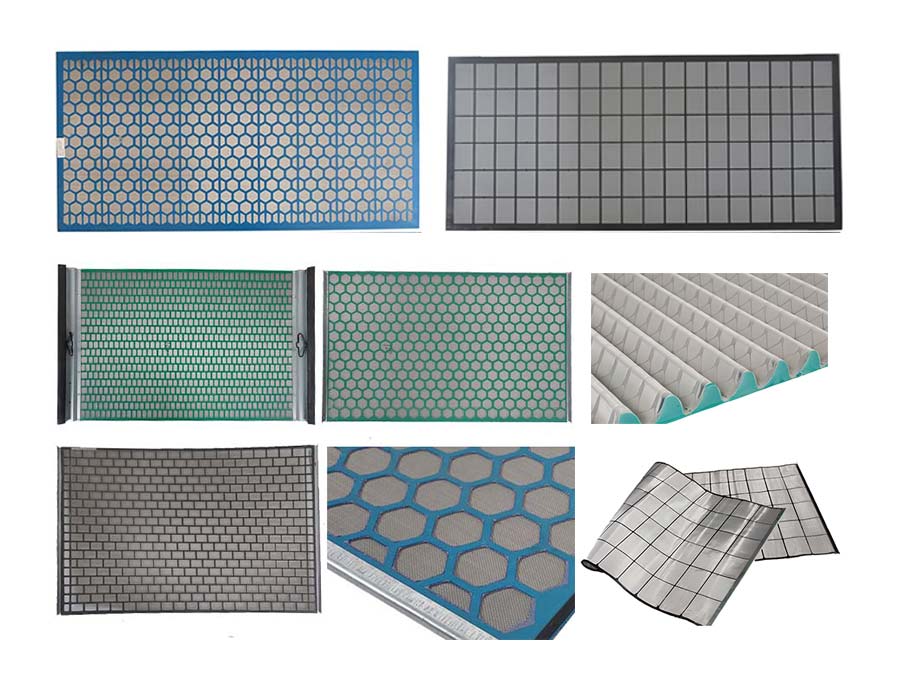
Different types of shaker screens feature various characteristics in terms of material, mesh shape, number of layers, and structural design, making them suitable for different operational environments. As a long-time supplier of drilling consumables for onshore drilling projects, SMKST is committed to providing customers with mainstream shale shaker screen products currently available on the market. Below, we will detail several major screen types, analyze their benefits and ideal usage scenarios, and help you pinpoint the most suitable solution to enhance overall drilling efficiency and reduce operational costs.
5 Main Types of Shale Shaker Screens
Shale shaker screens can be categorized in many ways – by material, mesh shape, number of layers, or brand, among other dimensions. However, one of the more popular approaches at present is classification by structural type. Different structural types of screens exhibit unique features in material selection, mesh design, and layer composition. Below, we will focus on several common structural types to help you understand their strengths and weaknesses, so you can choose the right screen for your specific drilling environment.
1. Hook Strip Flat Screen
Hook strip flat screens are multilayer screens designed specifically for shale shakers. They typically consist of two or three layers of 304 or 316 stainless steel wire cloth affixed to a steel backing plate. A fine upper mesh layer provides accurate filtration, while coarser middle and lower layers supply support to maintain stable performance under high loads. The steel backing plate (available in various thicknesses with hexagonal, rectangular, or square cutouts) can be adapted for various shale shakers. Its partitioned design effectively prevents localized damage from spreading, significantly extending service life.
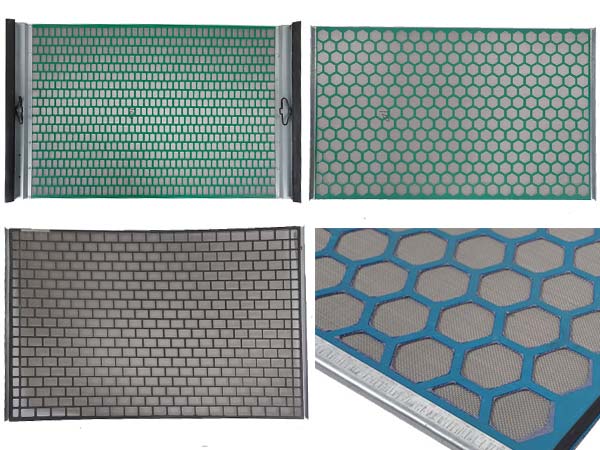
Renowned for their superior wear resistance and high throughput, these screens can effectively separate solids even when processing large volumes of drilling fluid, and they are easy to remove and maintain. The hook strip design simplifies screen replacement and reduces downtime. Compliant with API RP13C standards, hook strip flat screens are widely used in oil and gas drilling, mining, and construction industries that require efficient solids control. They are suitable for shale shakers such as the Derrick 500 series.
2. Pyramid Shale Shaker Screen
Pyramid shaker screens, sometimes referred to as three-dimensional or wave-type shaker screens, increase the screening area by 120% to 150% compared to conventional flat screens, greatly improving solid-liquid separation efficiency. They are composed of two or three layers of 304 or 316 stainless steel cloth tightly bonded to a perforated metal backing plate. A coarse bottom layer of wire cloth adds structural support and extends the overall service life. By layering meshes of varying densities, these screens enable more precise separation of different particle sizes while maintaining stability under heavy loads.
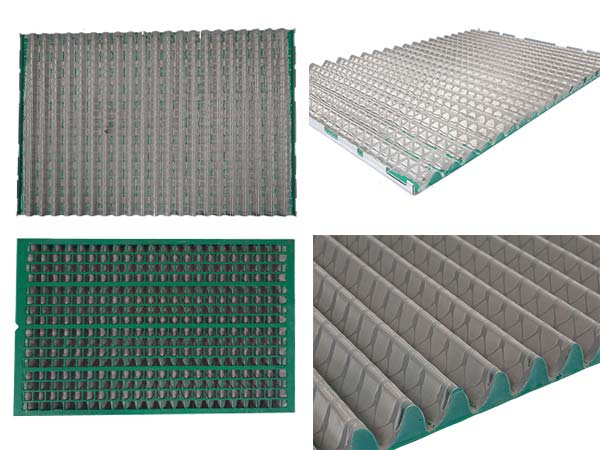
These screens can rapidly process large volumes of drilling mud, delivering drier cuttings and reducing residual solids in the fluid. Often compatible with Derrick FLC, DP 600 series, and similar shale shakers, pyramid screens are widely applied in oil, gas, and mining operations that require robust, high-volume solids control.
3. Steel Frame Shale Shaker Screen
Steel frame shale shaker screens bond two or three layers of 304 or 316 stainless steel cloth onto a metal frame. By selecting the appropriate mesh count (from 20 to 325) and using perforated backing plates of different sizes, these screens achieve highly efficient solid-liquid separation. The bottom metal frame and reinforcement ribs provide overall structural strength, while the properly tensioned top layers ensure screen stability during filtration. The screen cloth is divided into multiple independent small panels, effectively preventing localized damage from spreading and allowing quick patching with rubber plugs to minimize downtime.
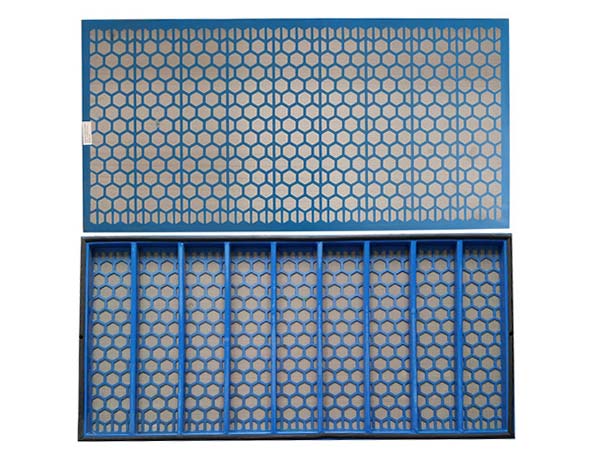
This type of screen is noted for its excellent wear, corrosion, and high-temperature resistance. It is suitable for solids control and mud circulation systems in oil and gas drilling, as well as for mud separation in mining and industrial applications. With enhanced durability and a longer service life, steel frame screens handle large fluid volumes effectively, ensuring continuous operation in complex drilling conditions and helping reduce total operational costs. The NOV Brandt VSM series, among others, commonly employs this type of screen.
4. Polyurethane Frame Shale Shaker Screen
Polyurethane frame shale shaker screens feature a high-strength polyurethane framework combined with two or three layers of 304 or 316 stainless steel wire cloth, delivering exceptional solid-liquid separation and long-term stable performance. The polyurethane frame offers outstanding impact and shock resistance, as well as excellent corrosion resistance—ideal for high-wear and chemically corrosive environments. Its partitioned grid design helps prevent localized damage from spreading. In addition, the screen is equipped with specially designed rubber plugs for rapid repairs, reducing both downtime and maintenance costs. A wedge-style quick-tensioning mechanism further simplifies installation and replacement, boosting operational efficiency.
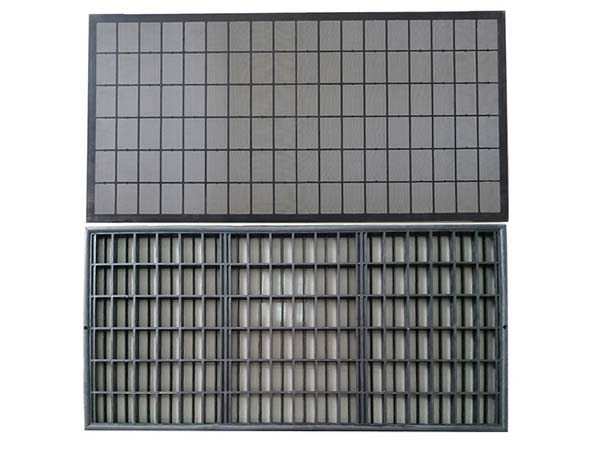
Commonly used with SWACO shale shakers in the oil and gas sector, polyurethane frame screens effectively remove solids from drilling mud, optimize solids control systems, and enhance drilling efficiency. They also excel in mining and construction applications by ensuring reliable material screening, particularly where screens must be replaced frequently.
5. Composite Shale Shaker Screen
Composite shale shaker screens integrate the advantages of both metallic and non-metallic materials. Typically made of two to four layers of stainless steel wire cloth fused to a composite frame, they are bonded into a single unit, then combined with metal reinforcement plates through spot welding or other adhesives to form a high-strength structure with a large screening area. Their effective filtration area surpasses that of flat screens, and localized damage will not spread rapidly, as specialized rubber plugs can be used for repairs.
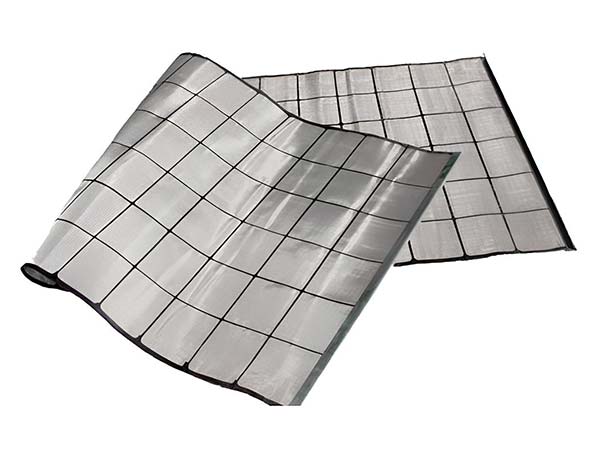
Composite materials may include carbon steel plate, stainless steel plate, or aluminum plate. Stainless steel wire cloth is most frequently used, with a coarse bottom layer for support. Composite frames undergo specialized anti-corrosion treatment to cope with high-corrosion and high-humidity conditions. This makes them well-suited for drilling scenarios involving fine particles, long operational hours, or extreme environments. Furthermore, they are cost-effective, striking a sound balance between performance and budget considerations.
Other Ways to Classify Shale Shaker Screens
As mentioned earlier, shale shaker screens can also be divided by material, mesh count, application scenario, equipment brand, and number of layers. Each classification approach can be tailored to specific field conditions, optimizing drilling mud circulation, improving solids control efficiency, lowering maintenance costs, and guaranteeing both continuous and economically viable drilling operations.
Below, we discuss how these dimensions impact shale shaker screen selection:
1. By Screen Material
Screen material directly influences its wear resistance, corrosion resistance, and lifespan. In normal drilling operations, stainless steel wire cloth is widely used for its strength and resistance to corrosion. In offshore environments or in conditions prone to chemical corrosion, polyurethane and composite screens are more suitable. Polyurethane screens are particularly favored for high-humidity, chemically active mud environments due to their lightweight, shock resistance, and chemical resistance.
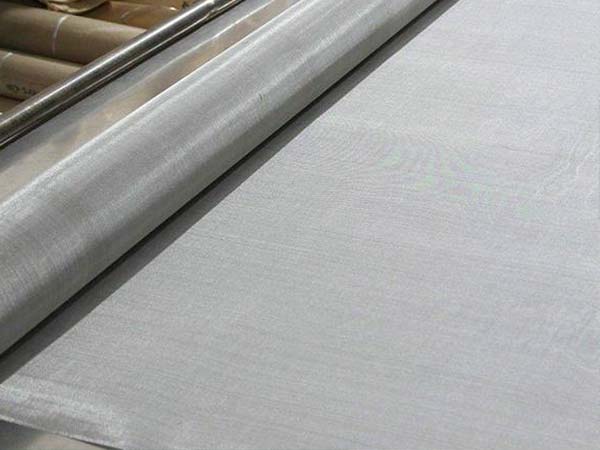
2. By Mesh Count
Mesh count determines a screen’s ability to filter out solids. Low mesh counts (20–60) are for coarse screening, filtering out larger cuttings and gravel. Mid-range mesh counts (60–120) target medium-sized solids, while high mesh counts (120–325 and above) remove fine particles to achieve high-purity drilling fluid. This tiered approach meets all filtration needs, from initial screening to high-precision separation.
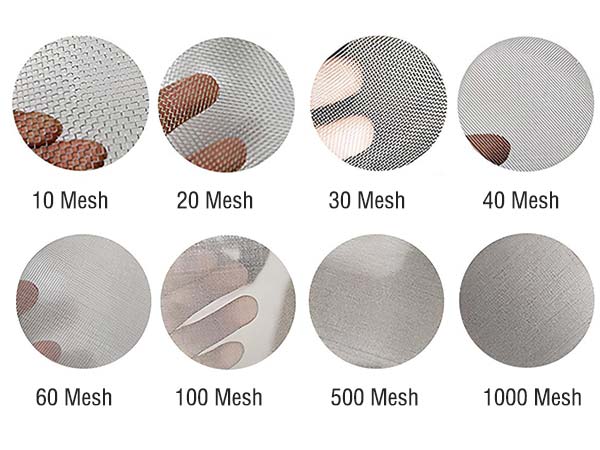
3. By Application Scenario
The choice of screen type varies depending on specific operations. For onshore drilling, hook strip flat screens and steel frame screens are popular for their cost-effectiveness and ease of replacement, meeting most routine requirements. Offshore conditions are more demanding—thus, polyurethane frame or composite screens are commonly selected to combat high humidity, severe corrosion, and significant wear. Additionally, in deep wells, complex well conditions, or extended drilling operations, composite screens with their lightweight and high strength are a reliable choice.
4. By Equipment Brand
Another crucial factor is the brand of the shale shaker. Notable manufacturers such as Derrick and SWACO offer specialized screen models tailored to their own equipment, which ensures optimal solids separation efficiency, minimized adjustment time, and improved screening performance. While Western-brand screens are known for their durability, they can be quite expensive. Hence, cost-effective alternatives from China are increasingly favored by drilling service providers in the Middle East, Africa, and other regions seeking both performance and value.
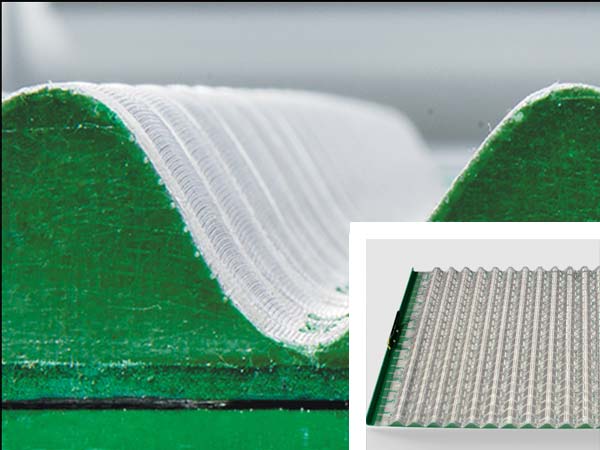
Conclusion
As the core component of a shale shaker, the shale shaker screen plays a pivotal role in drilling fluid purification. As described above, different structural screen types each have unique advantages depending on well conditions and operational requirements. Proper selection and application of suitable shale shaker screens can enhance the efficiency of solids separation, extend equipment service life, and significantly reduce both drilling and maintenance costs.
We hope the analysis and suggestions provided in this article will be valuable to drilling engineers and procurement managers, helping you achieve efficient, safe, and economically viable drilling operations.
